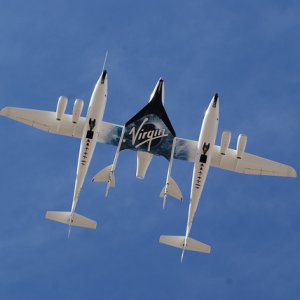Generative Design for Faster, More Efficient Production

STORY INLINE POST
Q: What is SpaceLab’s role in the local aerospace industry?
A: SpaceLab is a Mexican technology company that is focused on the development of unmanned aerial vehicles (UAV). The UAVs we develop have many applications but mainly focus on private security and defense. Our short-term priority will be to continue growing our workforce and introduce our drones to the market. Later, our goal is to enter the mobility sector through the development of a two-passenger UAV. In the future, we aim to expand our capabilities and enter the space sector as Mexico’s regulations are evolving to gradually allow civil users to develop and launch space technology.
Q: What differentiates SpaceLab from other technology designers?
A: Our company is based on the principles of “generative design,” which involves the use of AI-supported software for the development of products. Under this model, a human only inputs a few requirements and the AI generates a series of solutions that fulfill them. The user only has to choose the one that best adapts to their needs. This process saves users significant development time as the product presented by the AI can be used without further modification. We have incorporated this model into several of our practices, including the design of our UAVs, and have observed that the products obtained through this procedure are much more resistant and require less material. As a result, they are less expensive. Our goal is to integrate generative design principles into all the products we develop.
Q: What are the main applications SpaceLab’s drones have found in the local market?
A: Our drones stand out from the competition thanks to their in-house developed software that can be tailored to the client’s needs. We work on demand, both with the software and hardware of the product. Most commonly, we adapt the flight range, the number sensors and other details according to the client’s specifications. Thanks to these personalized adjustments we can offer much better products. For instance, a commercial drone will have an average range between 5km and 7km. Our drones have a range between 20km and 200km.
Our products are mainly used for monitoring and security through our sister company Tactical Support, which was created nine years ago. Through this company, we offer drones to monitor industrial parks. To that end, we are working with Caterpillar in Monterrey, Nuevo Leon. While a security guard would oversee an area in an hour, a drone can monitor that same area in only a few minutes. Moreover, our competitors’ drones require training a user to pilot the drone throughout its entire flight path. Our drones are automated so they deploy from a charging base, perform their round and return to base on their own. To do so, when we install our technology we perform an initial scouting mission to identify key security weaknesses and program the UAV to monitor them on its own.
Q: How are you positioning these products in the Mexican market?
A: Clients in Mexico are still not used to these technologies but they have observed better times and productivity from these drones. These companies are also able to reduce their costs and ensure their employees’ safety. Drones also provide real-time monitoring, allowing for faster response times in cases of emergency. At this point, we are only working in Monterrey but we recently finished our prototyping stage and clients have been highly satisfied with the results.
In December, we will enter our second investor round in which we expect to raise between MX$50 million (US$2.5 million) and MX$80 million (US$4 million). This investment will allow us to move forward and invest in the necessary equipment to begin producing our drones in larger quantities, which will allow us to stop depending on third-party manufacturers. However, our UAVs will not be mass-produced like those available at supermarkets.
Q: What projects is SpaceLAb developing for the space sector?
A: SpaceLab has strong R&D capabilities, allowing it to dabble into many different projects. In the short future, we plan to build a five-person team to develop rockets to launch nanosatellites. This will allow us to build the first fully Mexican motor rocket able to deliver satellites to low orbits. At this point, those in Mexico who want to launch a satellite need to approach NASA or ESA and pay a US$1 million fee. Once we develop our own rockets, we will be able to freely launch our own satellites at a fraction of the cost.
Our rocket design program will be developed over the long term because we first have to fully consolidate our drone development division. Moreover, at this point, developing rockets is highly expensive and Mexican regulation is lacking concerning the development and launch of satellites. Launching a rocket is a federal crime. SEDENA considers all GPS-equipped projectiles to be threats. However, we believe that through the soon-to-be-created Latin American Space Agency (ALCE), these regulations will change. In the meantime, we will invest in rocket R&D to be ready once the regulation changes.
























